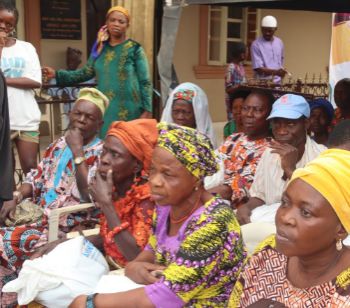Diet quality of women of reproductive age in Sagamu local government area, Ogun state, Nigeria
Abstract
Background
Diet quality refers to a diversified, balanced and healthy diet which is reflected in variety and diversity, adequacy, moderation and overall balance. Women’s diet quality during reproductive years influences their long-term health.
Objective
This cross-sectional study assessed the socio-demographic and socio-economic status, anthropometric status, dietary intake and diet quality of 270 women of reproductive age.
Methods
A probability sample was taken from households in the Sagamu Local Government Area, Ogun State, Nigeria. A semi-structured interviewer-administered questionnaire was used to obtain information on socioeconomic and socio-demographic characteristics of the respondents. Weight, height, waist and hip circumferences of the respondents were measured, body mass index calculated and compared with standards. Dietary intake was assessed using a multi-pass 24-hour dietary recall questionnaire. The Diet Quality Index International (DQI-I) questionnaire was used to assess diet quality on a scale of 100. The data obtained were analyzed using SPSS, version 23. Chi-square and correlation were employed to determine the association and relationship between variables. The level of significance chosen was at p<0.05.
Results
51.1% had a normal body mass index though there was high prevalence of overweight (29.6%) and obesity (14.4%). 57.4% were centrally obese and 46.7% had high waist-to-hip ratio, indicating high disease risk. The main staples consumed were cereals, roots and tubers and legumes. Carbohydrate and protein were in excess while potassium, calcium, folate, vitamin C and fiber were inadequate. Consumption of fat, saturated fat, cholesterol, sodium, protein, and iron were at recommended levels. The total DQI-I score was 62.9/100. The diet variety score, 12.5, indicating good diet variety. The diet adequacy score was 17.6, indicating low diet adequacy. The diet moderation score was 25.64, indicating good moderation. The dietary balance score was 7.1, indicating good overall balance.
Conclusions
We conclude that most of the respondents had good dietary variety, good dietary moderation and good overall balance; however, there was low diet adequacy, with a distinct pattern of low consumption of fruits and vegetables. It is recommended that the DQI-I tool be widely used in Nigeria as a means of assessing and comparing diet quality at state level.

Authors retain all copyrights. In making a submission to World Nutrition, they are certifying that all material is theirs except quotations, as indicated, and that they have obtained permission for any photos, tables, or graphics taken from other publications or websites.




